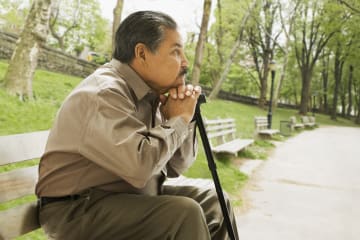Overview

Hip pain may be caused by many things, including overuse, a fall, or a twisting movement. Another cause of hip pain is arthritis. Your pain may increase when you stand up, walk, or squat. The pain may come and go or may be constant.
Home treatment can help relieve hip pain, swelling, and stiffness. If your pain is ongoing, you may need more tests and treatment.
Follow-up care is a key part of your treatment and safety. Be sure to make and go to all appointments, and call your doctor if you are having problems. It's also a good idea to know your test results and keep a list of the medicines you take.
How can you care for yourself at home?
- Be safe with medicines. Read and follow all instructions on the label.
- If you are not taking a prescription pain medicine, ask your doctor if you can take an over-the-counter medicine.
- If the doctor gave you a prescription medicine for pain, take it as prescribed.
- Store your prescription pain medicines where no one else can get to them. When you are done using them, dispose of them quickly and safely. Your local pharmacy or hospital may have a drop-off site.
- Rest and protect your hip. Take a break from any activity, including standing or walking, that may cause pain.
- Put ice or a cold pack against your hip for 10 to 20 minutes at a time. Try to do this every 1 to 2 hours for the next 3 days (when you are awake). Put a thin cloth between the ice and your skin.
- After 2 or 3 days, you can try applying heat to the area that hurts. Apply heat for 10 to 20 minutes at a time, several times a day. Put a thin cloth between the heat and your skin. You might also try switching between ice and heat.
- Sleep on your healthy side with a pillow between your knees, or sleep on your back with pillows under your knees.
- Do any exercises that your doctor or physical therapist suggests. These may include gentle stretching exercises to help keep your hip flexible.
- Learn how to prevent falls. Have your vision and hearing checked regularly. Wear slippers or shoes with a nonskid sole. Don't wear socks without shoes on smooth floors, such as wood.
- Stay at a weight that's healthy for you.
- Wear comfortable shoes.
When should you call for help?
Call 911 anytime you think you may need emergency care. For example, call if:
- You have sudden chest pain and shortness of breath, or you cough up blood.
- You are not able to stand or walk or bear weight.
- Your buttocks, legs, or feet feel numb or tingly.
- Your leg or foot is cool or pale or changes color.
- You have severe pain.
Contact your doctor now or seek immediate medical care if:
- You have symptoms of infection, such as:
- Increased pain, swelling, warmth, or redness in the hip area.
- Red streaks leading from the hip area.
- Pus draining from the hip area.
- A fever.
- You have symptoms of a blood clot in your leg (called a deep vein thrombosis), such as:
- Pain in the calf, back of the knee, thigh, or groin.
- Swelling in the leg or groin.
- A color change on the leg or groin. The skin may be reddish or purplish.
- You are not able to bend, straighten, or move your leg normally.
- You have trouble urinating or having bowel movements.
Watch closely for changes in your health, and be sure to contact your doctor if:
- You do not get better as expected.
Where can you learn more?
Go to http://www.healthwise.net/patientEd
Enter Z720 in the search box to learn more about "Hip Pain: Care Instructions".
Current as of: July 24, 2025
Author: Ignite Healthwise, LLC Staff
Clinical Review Board
All Ignite Healthwise, LLC education is reviewed by a team that includes physicians, nurses, advanced practitioners, registered dieticians, and other healthcare professionals.

